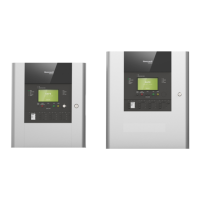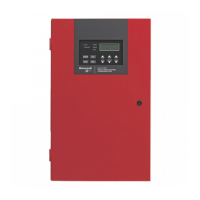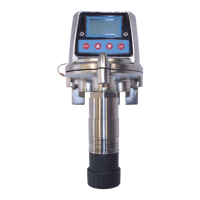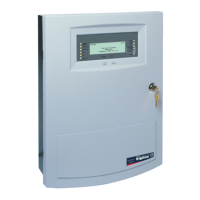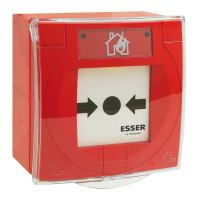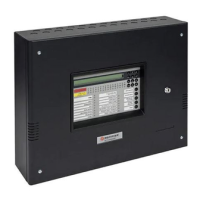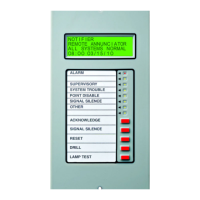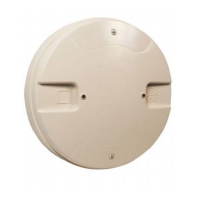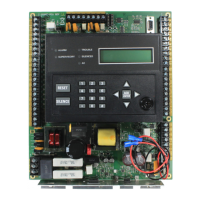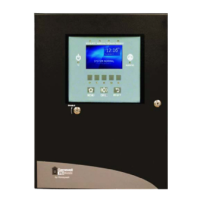XLS140 Installation Manual Form Number 95-7673-3 P/N 51927:C 12/06/2005 69
Section 5: Testing the System
5.1 Acceptance Test
When finished with the original installation and all modifications, conduct a complete operational
test on the entire installation to verify compliance with applicable NFPA standards. Testing should
be conducted by a factory-trained fire alarm technician in the presence of a representative of the
Authority Having Jurisdiction and the owner's representative. Follow procedures outlined in NFPA
Standard 72-1999, Chapter 7, Inspection, Testing and Maintenance.
5.2 Periodic Testing and Service
Periodic testing and servicing of the control panel, all initiating and notification devices, and any
other associated equipment is essential to ensure proper and reliable operation. Test and service the
control panel according to the schedules and procedures outlined in the following documents:
• NFPA Standard 72-1999, Chapter 7, Inspection, Testing and Maintenance.
• Service manuals and instructions for the peripheral devices installed in the system. Correct any
trouble condition or malfunction immediately.
5.3 Operational Checks
Between formal periodic testing and servicing intervals, the following operation checks should be
performed monthly, or more frequently when required by the Authority Having Jurisdiction.
Before proceeding: a) notify the fire department and the central alarm receiving station if
transmitting alarm conditions; b) notify facility personnel of the test so that alarm sounding
devices are disregarded during the test period; and c) when necessary, disable activation of
alarm notification appliances and speakers to prevent their sounding.
Disconnect all releasing devices to prevent accidental activation.
Check that the green POWER LED lights.
Check that all status LEDs are off.
Press and hold the LAMP TEST key. Verify that all LEDs and all LCD display segments work.
Activate an Initiating Device Circuit using an alarm initiating device or an addressable
initiating device on the SLC and check that all programmed active notification appliances
function. Reset the alarm initiating device, the control panel, and any other associated
equipment. In voice alarm applications, confirm that the proper tone(s) and/or messages sound
during alarm conditions. Select the paging function and confirm that the message can be heard
in the affected fire zones. Repeat the above step with each Initiating Device Circuit and each
addressable device.
On systems equipped with a fire fighter’s telephone circuit, make a call from a telephone
circuit and confirm a ring tone. Answer the call and confirm communication with the incoming
caller. End the call and repeat for each telephone circuit in the system.
Remove AC power, activate an Initiating Device Circuit through an alarm initiating device or
an addressable initiating device on the SLC, and check that programmed active notification
appliances sound, and alarm indicators illuminate. Measure the battery voltage with
Continued on next page...
!
WARNING:
Do not rely on disable/enable software settings to lockout releasing devices.
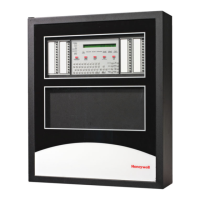
